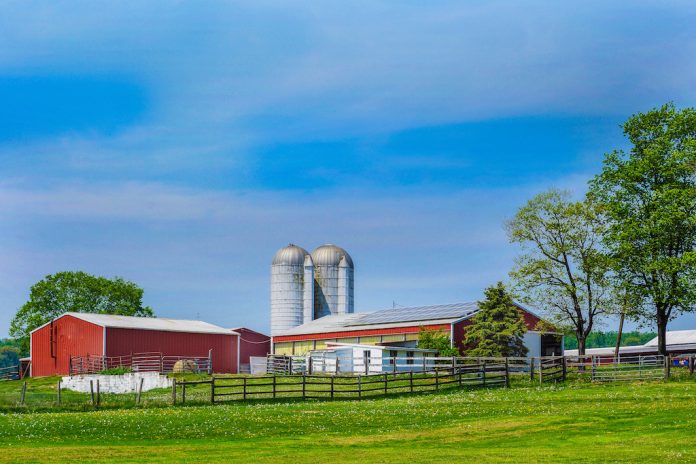If the National Farmers Union’s 2021 policy book looks familiar — that’s because it is. Over the last day of its virtual convention March 2, the organization voted to adopt the same policy book it developed and approved at the 2020 convention for 2021, as well.
Todd Hagenbuch, policy chair, said while this is not how the organization has handled choosing policy in the past, the online format doesn’t lend itself well to debate and amending policies. The farmers union, like many others, has gotten familiar with change over the past year.
“I know that we all are anxious to get on the other side of the COVID situation so that we can return to whatever the new normal will be,” said U.S. Secretary of Agriculture Tom Vilsack, in a March 1 address to the convention. “But the reality is that farmers, ranchers and producers around this country have had difficulties for a lot longer than we’ve been dealing with the COVID situation.”
About 89% of farmers and ranchers, Vilsack said, don’t make the majority of their income from their farms. That statistic, he said, drives home the importance of making changes to food systems so farmers can make more of their income on the farm.
In his state of the farmers union address March 1, organization president Rob Larew emphasized a need for action on multiple issues, criticizing what he called an “epidemic of bipartisanship.”
“We often talk about the lack of … bipartisanship in Washington, but regardless of which party has controlled the White House and Capitol Hill, there has been an overwhelming bipartisan response by virtue of the lack of action on the most pressing issues facing family farmers and ranchers today,” Larew said. “Political stalemates have their own result … We cannot afford to let this continue.”
He is hopeful the farmers union can work with Congress and the new administration on pandemic recovery and giving farmers more power in food systems.
President address
While the pandemic has brought plenty of issues, it also allowed the farmers union to reach more members than ever, Larew said. More than 400 attended the virtual fly in, making it one of the organization’s largest groups ever for a fly in. Many joined webinars and social events online.
In addition to the pandemic, racial equity became a major topic across the country in 2020. The farmers union, Larew said, was an early supporter of the women’s suffrage and civil rights movements. Those positions were not popular at the time.
“2020 was not a time to back down from that legacy,” he said.
The farmers union is hoping to see legislators move forward with racial equity legislation for farmers.
Other concerns for the farmers union include food supply chains, consolidation and competition in the agriculture sector, biofuels, infrastructure and climate policy, Larew said.
Policy
Though it chose to adopt the same policy book as last year, the organization also said yes to four new special orders of business March 2.
The first one addresses family farming and recovering from COVID-19, and calls on the federal government to take action on things including COVID-19 relief, rural broadband access, food and nutrition assistance, inequities in agriculture, immigration reform and enforcing antitrust laws.
The others list efforts and actions the organization would support to address climate change, supporting increased biofuels use and production and issues facing the livestock and dairy industries, like supply chain bottlenecks.
USDA plans
Several of the farmers unions’ priorities are similar to priorities Vilsack outlined for the U.S. Department of Agriculture. Vilsack plans to push for new, better and fairer markets.
New markets could include things like carbon. Improving existing markets includes things like enforcing trade and market rules, expanding processing options and addressing discrimination at the USDA. Vilsack plans to have an equity commission investigate all USDA programs to identify and root out systemic racism.
Before passing more COVID-19 relief packages, Vilsack wants to investigate exactly how the funding from the last ones were split up. Reportedly, the top 10% of farmers got 60% of the benefits, and the bottom 10% only got about .26%.
“We want to make sure that when we utilize this third tranche of resources, that we are able to do it in a way that provides overall equity and fairness in the distribution of these support payments,” he said.
There’s also work to be done on infrastructure in rural America, especially on broadband. Building out broadband to rural areas isn’t always profitable for the private sector, so Vilsack believes the federal government needs to help out.
“Rural America has been forgotten for far too long when it comes to these types of investments,” he said.
There are also some infrastructure concerns at the USDA. Vilsack said there are vacancies at every level of the department, and part of his job will be to make sure those vacancies are filled, so the USDA has ability to provide research and resources for farmers.
Sens. Debbie Stabenow (D-Michigan) and John Boozman (R-Arkansas), and Reps. David Scott (D-Georgia) and Glenn Thompson (R-Pennsylvania) also spoke at the convention, highlighting similar priorities to the ones Vilsack discussed.
Award
At the convention March 1, the organization recognized Don Wick, president of Red River Farm Network, in Grand Forks, North Dakota, with the 2021 Milt Hakel Agriculture Communications Award.
Wick has worked in farm broadcasting for nearly four decades, and has worked for a number of stations in multiple states. Larew specifically recognized Wick for a series he did on farmer mental health.
“Don has approached a difficult, uncomfortable topic with sensitivity and respect, and in doing so has done a great deal of good. Not only has he improved awareness of mental health challenges, but he has also helped eliminate some of the stigma around these matters and highlighted resources that are available to those who are struggling,” Larew said.










